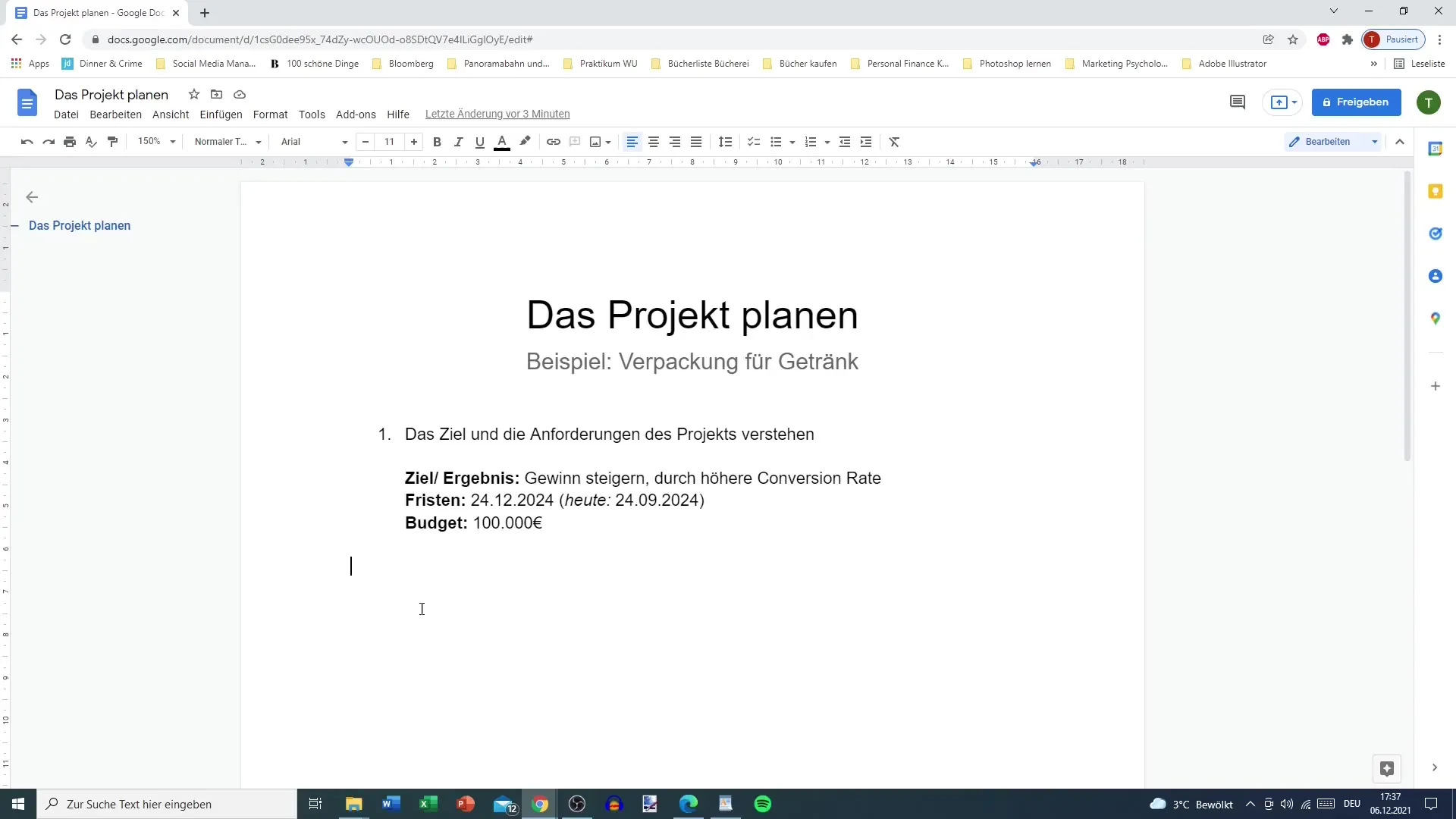Regardless of whether you are starting a new project or optimizing an existing one, the clear definition of tasks is essential for success. In this section, you will focus on the second step of project planning – defining the project's tasks. This involves not only identifying which tasks need to be completed but also finding the right structure and organization.
Key Insights
The definition of tasks should be done through brainstorming within the team. It is advisable to create a project structure plan (PSP) and to visualize tasks on a timeline. The process can be somewhat time-consuming in practice, but the results are worth it.
Step-by-Step Guide to Task Definition
To define the tasks for your project, follow these steps:
Step 1: Framework Conditions and Brainstorming
At the beginning, it is important to consider the framework conditions of the project. Organize a brainstorming session to identify all possible tasks needed to achieve the project goals.
Here, you should think openly about what is needed. Take the time to collect all ideas without immediately evaluating or sorting them. Write down all thoughts that come to mind during the brainstorming.

Step 2: Representing Tasks on a Timeline
Once you have created a list of tasks, take it one step further and transfer these to a timeline. Visualize which tasks need to be completed by when. This helps you gain a clear overview of the project timeline.
Use meaningful time units to check the feasibility of the tasks. This also includes considering dependencies between tasks so that you recognize which tasks may need to be done concurrently or sequentially.
Step 3: Creating a Project Structure Plan (PSP)
To keep track of the tasks, it is helpful to create a project structure plan (PSP). A PSP helps you break down the tasks into smaller, manageable parts that are easier to handle.
You can create the PSP in various formats; the most important thing is that all team members understand how it works and can contribute.
Step 4: Teamwork and Feedback
Individual approaches during brainstorming are helpful, but involving the entire team is crucial for success. Make sure to discuss your ideas and the outlined timeline with your team.
The team brings different perspectives that can help you identify potentially overlooked tasks or optimize the scheduling. Clarifying feedback is important as it questions previous assumptions and considers new ideas.
Step 5: Adjustment and Development
Developing an initial list of tasks is just the beginning. In practice, it will be necessary to continually review and adjust the tasks and their structure.
Stay flexible and open to changes as new information arises or the project evolves. Document all adjustments so that everyone has a clear record and traceable history of your decisions.
Summary – Guide to Defining Project Tasks
The effective definition of project tasks is crucial for successful implementation. Work with your team to create a project structure plan and visualize these tasks on a timeline. The central goal is to gain clarity and establish effective workflows. Remember to regularly repeat the brainstorming process and give your team the opportunity to provide continuous feedback.
Frequently Asked Questions
How do I start brainstorming?Start with an open mindset and jot down all ideas that come to you and your team.
Why is a project structure plan important?The PSP helps you to structure tasks and keep track of the project progress.
How often should I review the tasks?Regular reviews are important, especially with changes in project progress or new requirements.


